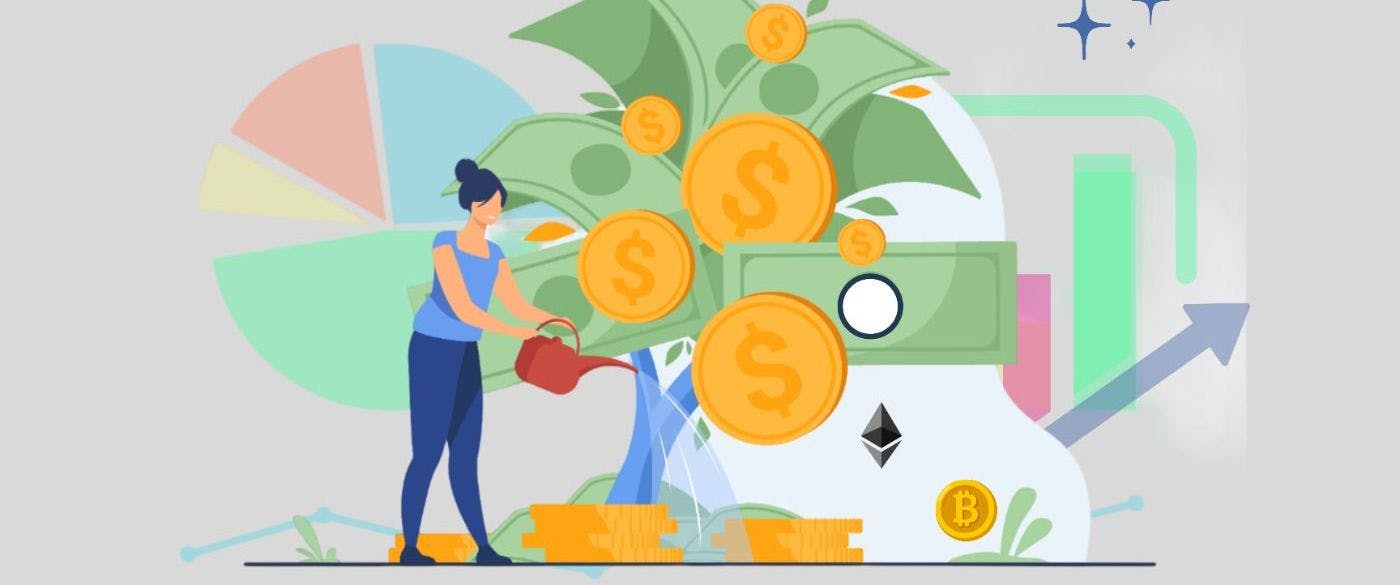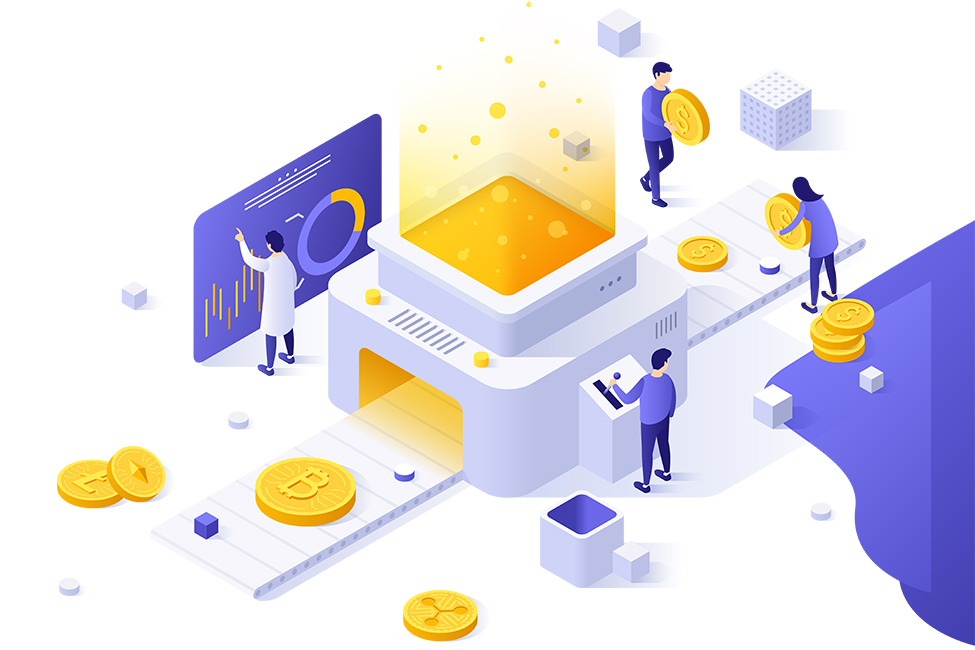Liquidity Mining, Fair Launch or Incentive are considered strategies of projects with the goal of attracting and attracting users and liquidity to their projects. So what are these solutions that are interesting and interesting? Let’s find out more in the article below.
To better understand this article, people can refer to some of the articles below:
- What is Fair Launch? Pros & Cons of Fair Launch
- What is Liquidity Mining? The Success or Failure of the Protocol Depends on Liquidity Mining
Strategies to Attract Liquidity in the Crypto Market
Fair Launch – First in the market strategy
Overview of Fair Launch
Fair Launch only became popular and talked about a lot when most projects in the crypto market reserved a large amount of tokens for the Core Team and Investors. In particular, Investors have the right to buy large quantities of tokens at an extremely cheap price. And when tokens are listed on exchanges, investors dump them. Most Retails do not like this.
That is why Fair Luanch was born. Because With Fair Launch, 100% of the total token supply will belong to the community and based on contributions to the network, you will receive equivalent rewards..
The beginning of Fair Launch
Bitcoin is the first Fair Launch project. Bitcoin distributes its tokens with BTC as a reward to miners for successfully adding transactions to the blockchain. Bitcoin has a fixed total supply of 21M BTC and is released on a predetermined schedule and is programmed to decrease over time. No individual or organization has the ability to change the supply of Bitcoin by printing more or reducing it.

Note: Bitcoin mining is the only way to generate new BTC. The stronger the miners’ mining rigs, the more Bitcoins they can mine.
So why does Bitcoin need so many nodes? For each transaction to be added to the blockchain, the consent of most nodes on the main network is required, so the more nodes, the more secure and decentralized the network is. So clearly there must be some incentive for miners to join the Bitcoin network, that is the reward.
Fair Launch is officially a trend
Fair Launch only truly became mainstream with the first project to lead DeFi Summer 2020. Yearn Finance is a Yield Farming platform that allows users to find attractive and safe sources of profit in the DeFi market after having undergo evaluation by Yearn Finance’s Contributor team.
The issue of position between VCs, Core Team & Retails at this point is much clearer than at previous times. Because of the frustration of Retails, it is understandable that projects choose the Fair Launch direction. However, for Fair Launch to be successful, it must achieve the following factors:
- The development team must have experience, passion & enthusiasm in the market and must have a solid personal financial background. Because they will not have any % tokens in the project they build.
- The project must have products that immediately meet the urgent needs of the market to generate early revenue.
- The project must quickly build a quality community including users, Contributors contributing to Marketing, Business,… for the project.
Everyone can read more about Fair Launch in the article What is Fair Launch? Pros & Cons of Fair Launch.
Liquidity Mining with DeFi Summer 2020
Overview of Liquidity Mining

Liquidity Mining (LM) is when users will participate and become users of the protocol and then the reward they receive is the project’s native token.
Some easy-to-understand examples about Liquidity Mining:
- Users deposit Crypto Assets into the Compound protocol or borrow money from Compound (or both) while Compound rewards users with COMP tokens. The more you borrow or lend, the greater the amount of COMP you receive.
- Users who provide liquidity on Uniswap will have Uniswap reward UNI to LPs. The more liquidity provided, the more UNI LP will receive.
- Users who participate in Trading on a number of Perpetual platforms will be rewarded with that project’s native token. The larger the trading volume, the larger the reward.
Similar to Fair Launch, Liquidity Mining uses tokens as carrots to bootstrap liquidity for the project. But the difference here is that projects usually only use about 30 – 70% to do Liquidity Mining. If the project uses 100% tokens to do Liquidity Mining, then that project is Fair Launch.
The beginning of DeFi protocols
Liquidity Mining has been closely associated with the DeFi market from DeFi Summer 2020 to DeFi Summer 2021 with a number of projects that started this movement such as:
- Compound was the first platform to use LM, which helped Compound’s TVL increase from around $80M to an all-time high of over $12B. This helps Compoudn become one of the largest DeFi platforms in the crypto market.
- Uniswap also used LM to bootstrap the platform’s liquidity. TVL increased from $950M to nearly $3.5B after Lm ended TVL decreased to $1.6B.
After the success of LM, most DeFi projects later use LM as one of the strategies to attract liquidity and TVL to the platform.
Change to suit Liquidity Mining’s market
The critical point in that model is: Using Native Token as Incentive => LP using Native Token reward product => Selling on exchanges => Token price decreases and if the project continues to increase incentives To maintain the attractiveness of the reward, the resale force is even greater, so if LM is used incorrectly, the project will soon die.
Therefore, many solutions have been created to help maintain the token price, thereby maintaining the $ value of the incentive:
- Staking program.
- In the reward vesting program, instead of receiving 100% of the reward, LP only receives a portion, the rest will be paid in installments within a fixed period of time.
- Build more use cases for native tokens on other DeFi platforms.
- Build the veToken model.
- Build a Token lock model to receive more profit than platform revenue, receive higher APY stakes, use products first, reduce fees when using products,…
Incentive – Strategy of Layer 1 & Layer 2 platforms
Actual implementation of Layer 2

This is the model that Optimism has been doing extremely successfully. Intentive in the direction of Optimism is quite simple with the following steps:
- Step 1: Optimism deducts a portion of tokens as an incentive program for its ecosystem.
- Step 2: The projects will write a proposal including introduction, how many OPs are requested, what are the OPs requested for, and what are the goals?
- Step 3: The community evaluates and approves the proposal.
- Step 4: Optimism will award OP to projects whose proposals are approved.
- Step 5: Projects use OP as incentive
- Step 6: Both users, TVL, project revenue and Optimism all grow.
Using this method, there were times when Optimism’s TVL surpassed Arbitrum to become the largest Optimistic Rollup platform on the market. Using this same method, Kwenta caught up with GMX in the Perpetual race.
Not only that, Layer 1 or Layer 2 projects use project tokens to do things including:
- Award prizes to winning projects in Hackathons.
- Reward potential projects in the ecosystem that require an initial Grant to get off the ground.
- Awarding rewards to partners in Community, Marketing, Media,…
All with the purpose of promoting the project to develop in different directions.
Bond Sales
Often referred to as the Bond selling model, it means that users will have the right to buy the project’s native tokens at cheaper market prices in exchange for users having to provide what the project requires:
- Olympus DAO allows people to buy OHM at a 10% discount but in return Olympus DAO will own the liquidity that users deposit into the protocol.
- JPEG’d allows people to buy JPEGs at a discounted price in exchange for sending CVX – native tokens to the protocol.
- Dopex allows people to buy DPX at a discounted price in exchange for users depositing Stable Coins into the protocol.
Summary
Above are some strategies to attract liquidity so that the project can bootstrap its liquidity, TVL or Tresury from the incentives it has. However, each model has its own advantages and disadvantages. Overuse can lead to a project dying before it succeeds.


